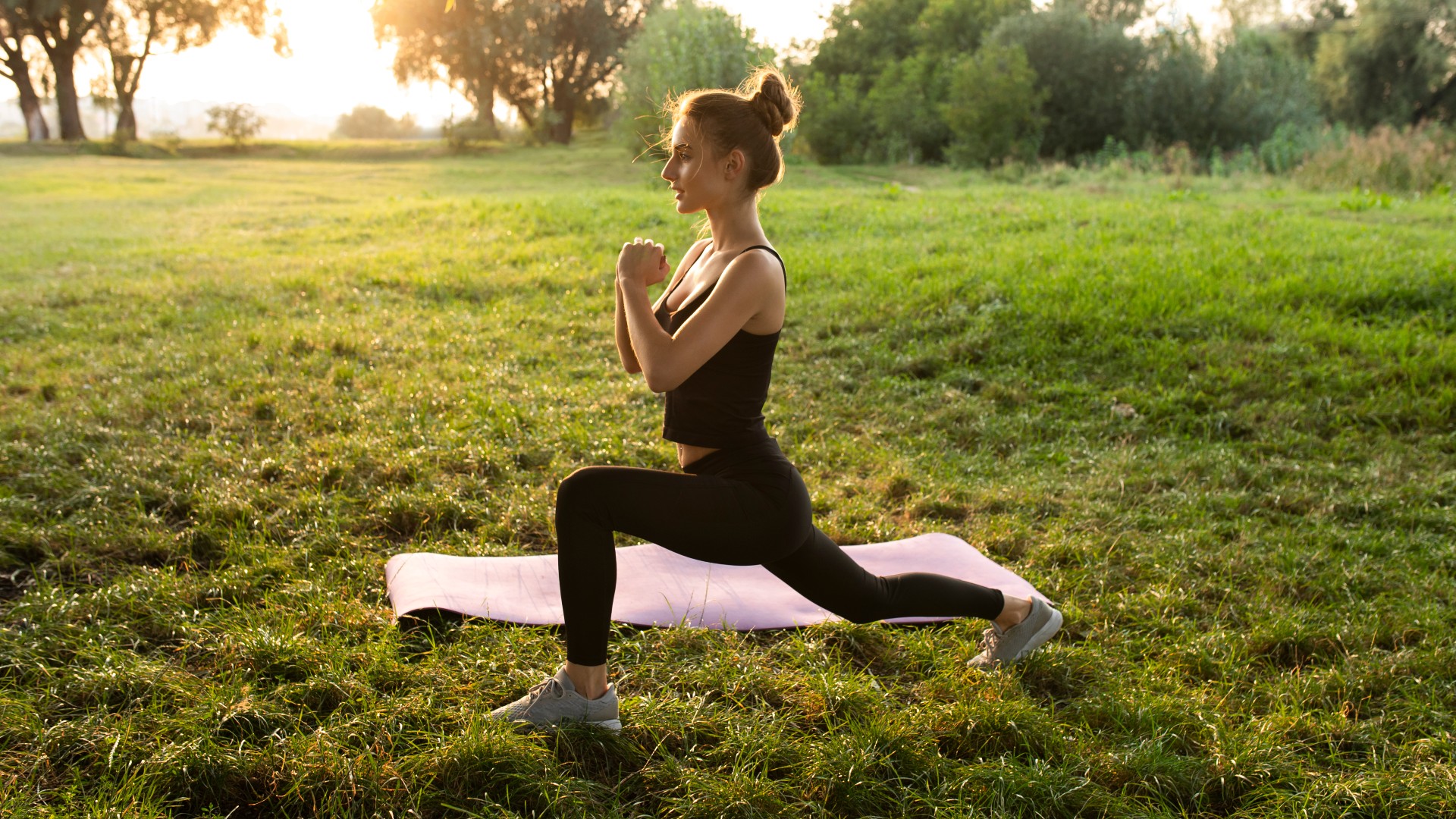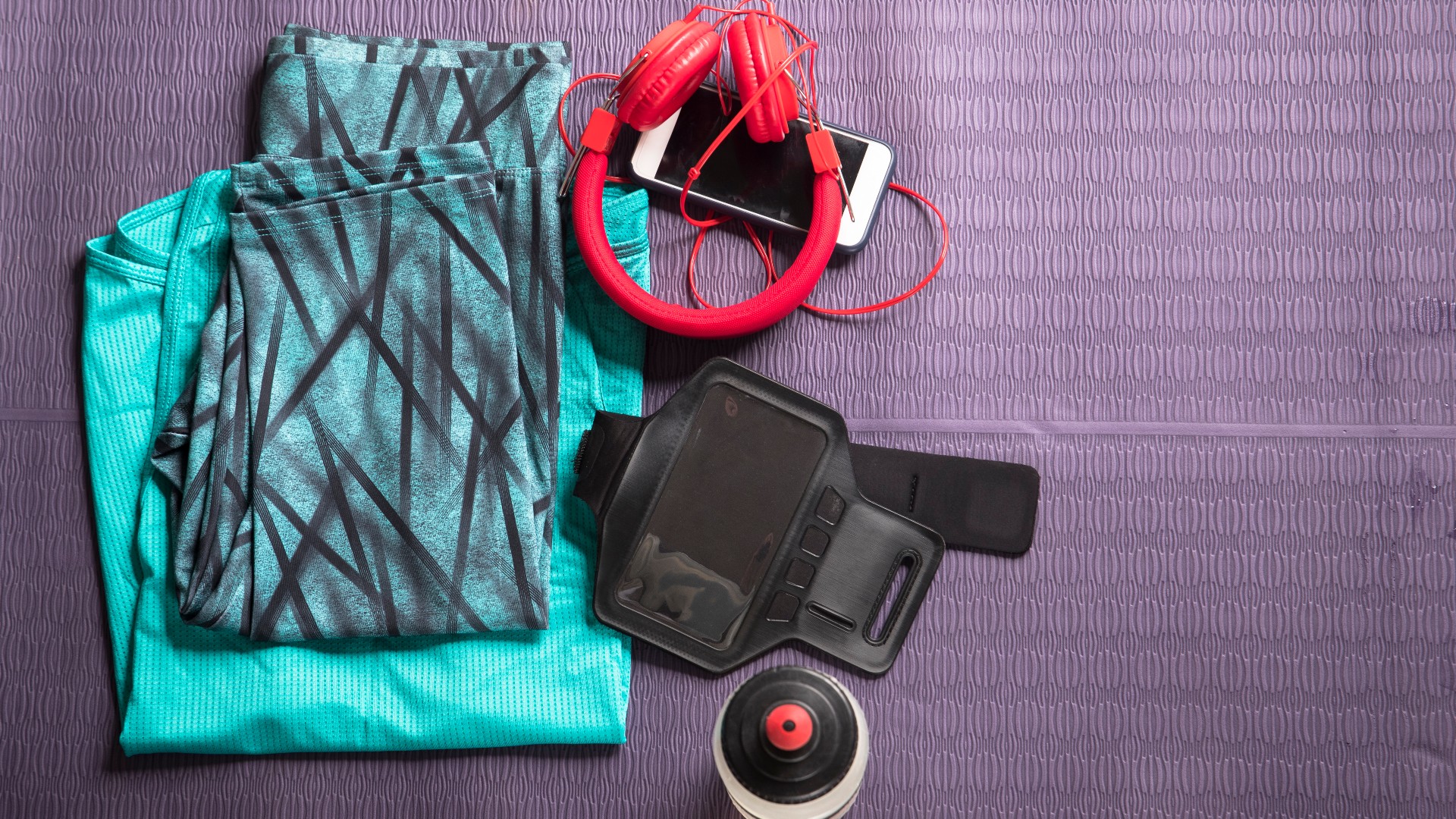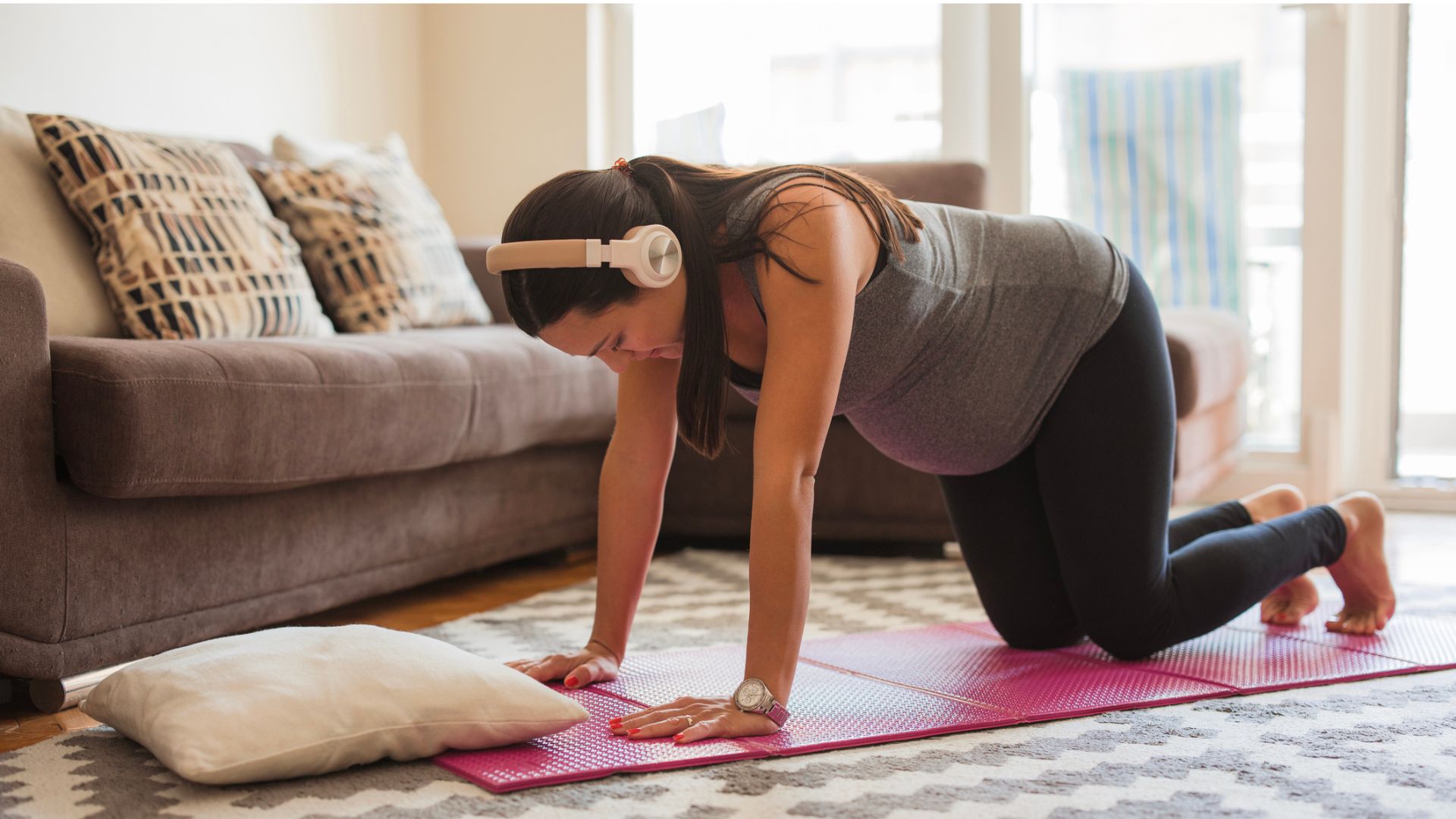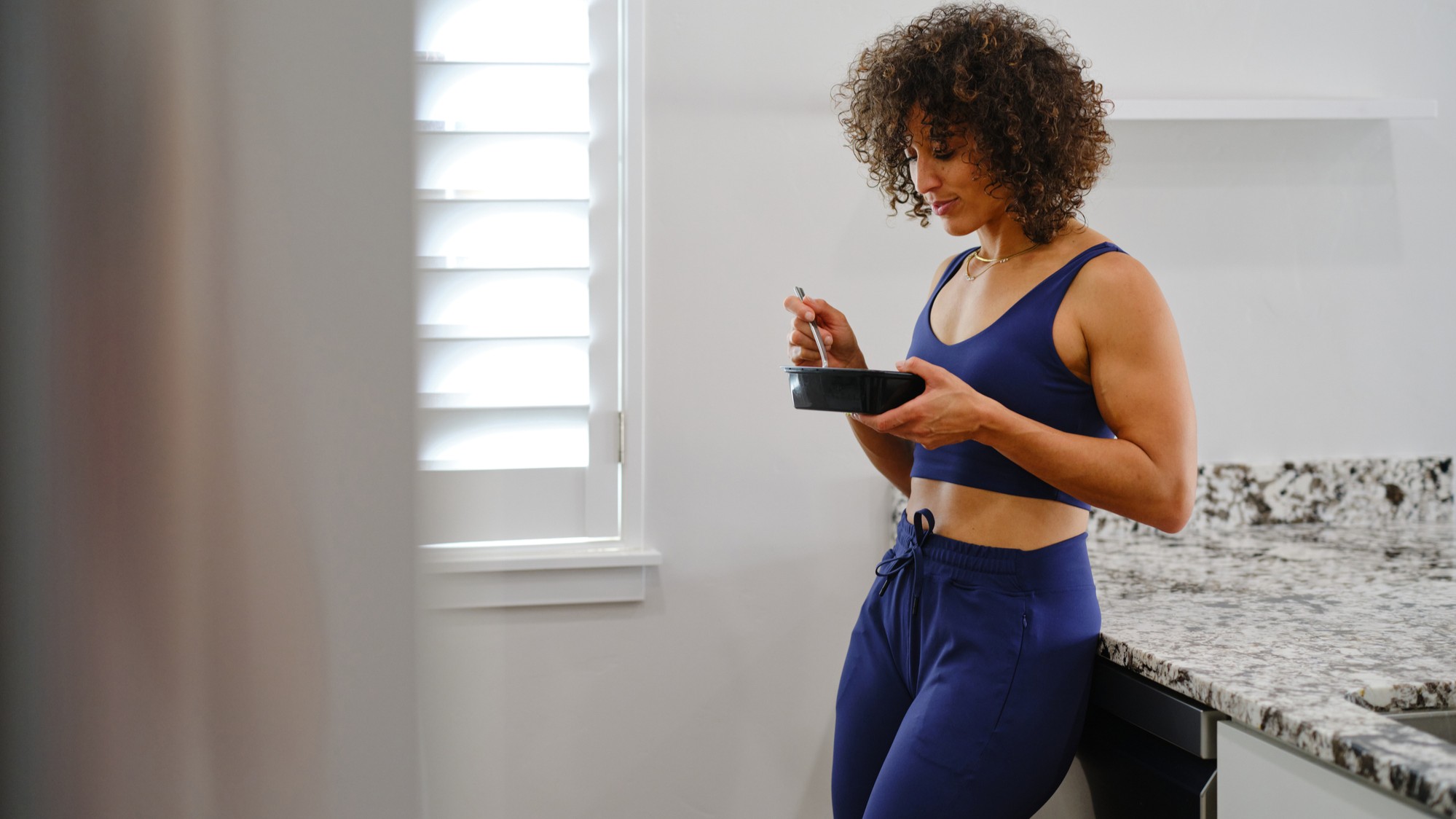Lacking exercise motivation? 11 science-backed tips to try
If your workout mojo has taken a nosedive, try these tips to help you get back on track


Whether it’s a jam-packed work schedule, a weight loss plateau or sore hamstrings, there are a number of reasons for losing exercise motivation. Admittedly, some of life's hurdles are unavoidable and you shouldn’t sweat the odd slip-up, but too many missed sessions could see your fitness goals slide backwards.
When it comes to maintaining long-term motivation, Dr. Josephine Perry, chartered sports psychologist at Performance in Mind and author of The Psychology of Exercise, suggests applying the theory of self-determination.
“To be truly motivated and to stay motivated, three pillars need to be in place,” says Perry. “The first is having a sense of belonging and social connection with others, the second is mastery or feeling competent at something and the third is having the autonomy to choose our current and future activities – having a choice and a voice.”
With this in mind, we’ve rounded up some top expert and science-backed strategies to help kickstart your motivation and keep it kicking.
1. Track your fitness
According to a systematic review study in the Journal of the American Medical Association, investing in wearable workout equipment such as a fitness tracker to monitor your training progress, can be a huge aid in motivating you to stick to your goals.
In the data from the studies reviewed, use of a pedometer was associated with significant increases in physical activity as well as improved health outcomes for body mass index and blood pressure.
If you don't already own one, take a look at our pick of the best fitness trackers to with which to monitor your progress and track your goals.
Get the Fit&Well Newsletter
Start your week with achievable workout ideas, health tips and wellbeing advice in your inbox.
2. Build it into your daily routine
Feel like you can’t find the time to workout? Performance enhancement specialist and author of The Strength and Conditioning Bible, Nick Grantham, recommends finding opportunities to incorporate activities in and around your normal routine.
“People often fall into an all or nothing approach with exercise,” explains Grantham. “But something as simple as doing squats whilst brushing your teeth or push-ups as the kettle boils can be an effective way of keeping yourself moving, without it explicitly feeling like exercise.”
3. Move outdoors
There are many benefits to be had to exercising outdoors, and according to a study published in the International Journal of Behavioural Nutrition and Physical Activity, taking your workout outside could be key to improving your motivation.
In the study, participants that exercised outside were able to go for longer and also exercised more often than those working out indoors - racking up an extra 30 minutes of activity a week. Plus, the vitamin D exposure will help to boost your immune system and your mood.
So why not try heading out for a run or bike ride, trying a park workout or simply moving your best yoga mat outside for your next class?

4. Book it or build it
Research shows that training logs are an effective tool for maintaining your motivation and exercise intention. In one study, swimmers that completed self-monitoring logs showed improved adherence to their exercise regime.
“Keeping an exercise journal with drawings, photos, sayings or even a list of your favourite exercise music is a good place to start in recording and noting your competency,” explains Dr. Rhonda Cohen, Sport & Exercise Psychologist at Middlesex University.
So after your next sesh, try journaling about it. Whenever you need some motivation fuel, you can pull out the log and read about how great you felt after nailing that HIIT workout.
“But if a log book isn’t your thing then try building something, like a Lego tower, instead,” says Cohen. “Every time you run, or exercise add to the tower until you build something truly amazing.”
5. Harness the power of scent
Surprisingly, your nose can play a supporting role in enthusing and motivating you. Research in the International Journal of Neuroscience found that sniffing the herb rosemary promoted alertness, whilst another study in the Journal of Sport & Exercise Psychology found that sniffing peppermint delivered improved workout results.
In the study, participants who undertook the physical tasks in the peppermint odour conditions had an increased increased running speed, handgrip strength and number of push-ups performed compared with those in the non-peppermint group.
To incorporate aromatherapy into your exercise routine, invest in one of the best diffusers for essential oils for use pre-workout, or else try pulse-point roll-ons.
6. Find your fitness community
“Try exercising or working out with a devoted exercising companion,” says Cohen. “It helps build social connections, which is something we really need at the moment and whether it is in person or online, it is a good way forward.”
According to researchers from Flinders University in South Australia, sharing exercise experiences and progress to app communities and social media platforms provides the necessary encouragement for people to stay motivated with exercise programs.
“Something as simple as uploading runs to Strava or chatting with others about your exercise on social media will make you feel part of a community and give you a sense of belonging,” says Perry. “Feeling part of something outside of yourself is a huge motivator.”
7. Get app savvy
“Making use of apps is a great way to raise your motivation,” says Grantham. “Zombie apocalypse apps are quite popular with runners as they help to gamify the run and incorporate intervals of run, rest and walk. The competitive edge can also be for keeping the commitment and motivation up.”
In one study published in the journal Psychology of Sport and Exercise, researchers looked at over 1,300 adults, over half of whom used a physical activity app such as Fitbit, Garmin or Strava. They found that the game-like incentives and rewards built into the apps resulted in competitive users engaging in significantly higher levels of physical activity. Check out our list of the best workout apps to find one that suits you.
“Another popular app is Geocaching, which can turn a simple walk into a fun treasure hunt,” explains Grantham. “You use GPS to hide and seek containers called “geocaches” at specific locations marked by co-ordinates.”
8. Set yourself up for greatness
All the work that goes into prepping for your workout can be a greater obstacle than the workout itself. Take the “maybe” out of your workout plans and get yourself ready ahead of time.
“It often helps to get your kit out the night before,” says Grantham. “This limits any scrambling around in the morning, and when you wake up you can see your gear is there ready to go - you’re less likely to skip your workout.”

9. Find your joy
Remember when you were a kid and exercising wasn’t hard work, but merely play? Try channelling your inner child and do exercises that you find fun to maximise your motivation.
“Choosing activities that you enjoy ties into the aspect of autonomy,” explains Perry. “Without choice, your motivation gets squashed and you are much less likely to want to put the effort in or to perform well.” Plus, a study from Cornell University found that when you think of your workout as fun rather than exercise, you’re less likely to overeat afterwards. Bonus!
Alongside choice, Perry also suggests mastery. “If you feel good at what you do, you’re more likely to stick with it,” explains Perry. “Whatever your exercise is, pick some part of it that you really want to master – make it your super strength and you’re more likely to want to do it more.”
10. Practice microdosing
Struggling to squeeze that 45-minute workout into one sitting? Try breaking your workout up by into smaller sessions. A study at the University of Wisconsin-Oshkosh found that women dropped equal amounts of weight doing one 30-minute workout, two 15-minute sessions, or three 10-minute bursts. Make it work for you.
“With many of our athletes we use microdosing,” says Grantham. “This involves taking two or three different exercises and doing them for 10 to 15 minutes each day.” This helps to eliminate the common pitfall of feeling like you don’t have the time to do your workout.
“Rather than not doing your one-hour run at all, break it up,” says Grantham. “Even if you just do 15 minutes four times a week, this is better than doing nothing and it allows you to form a manageable habit and ritual which gets you away from that all or nothing rollercoaster.”
11. Pump up the beets
If your motivation is flagging, try updating your playlist with fresh new music that will get your blood pumping and help keep you moving. Try synchronizing the music tempo to the pace of your workout too; a University of Toronto study found that people get better results when the beat of the music complements their pace.
We outline how to match your tunes to the beats per minute (BPM) in our article listing the best workout music - and recommend the best headphones to listen with in our list of the best workout earbuds.
And for that extra energy hit, dig out your best blender to make a pre-workout beetroot shot. Research from Kansas State University found that drinking one two hours pre-workout helped to boost energy, endurance and stamina during exercise.
Angela has been a health writer for over 10 years, contributing to a range of online and print publications including Women's Health, Women's Fitness, Your Fitness, Top Santé, Healthy, and Good Housekeeping. She writes about all aspects of health and wellbeing, with a special interest in nutrition and the therapeutic application of food. A qualified nutritionist and a recipe developer, she is the founder of Dara Dara Nutrition and has developed recipes for titles including GoodtoKnow. In her spare-time she likes to throw netballs, hula hoops and yoga poses (or what poses as yoga!) and has recently taken to the bass guitar. Fortunately for her neighbors, she’s invested in some headphones.
-
 I’m a personal trainer and I love this plank variation for building core strength and reducing back pain
I’m a personal trainer and I love this plank variation for building core strength and reducing back painThis one move could help you get a stronger core
By Maddy Biddulph
-
 Put down the protein shake—this high-protein chicken and rice recipe is a better way to refuel after a workout
Put down the protein shake—this high-protein chicken and rice recipe is a better way to refuel after a workoutAnd it only takes 10 minutes to make
By Lou Mudge